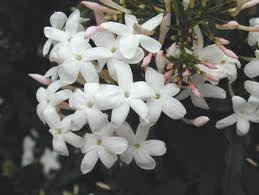There are several varieties of jasmine, ranging from evergreen and semi-evergreen to deciduous vines and shrubs. Winter jasmine grows in United States Department of Agriculture plant hardiness zones 6-9 and, along with the other varieties of the plant, is susceptible to three types of insect problems.
- Aphids attack winter jasmine and other types of jasmine plants by colonizing on flower buds and the underside of leaves. They cause stunted growth and curled or distorted leaves by sucking out the sap of the plant. Mealybugs also feed on the sap of jasmines and leave large amounts of a sticky substance called honeydew on the leaves, which encourages sooty mold. Scales are another problem for jasmines. They cause leaves to wilt, turn yellow and drop prematurely.
Biological Control
- Control aphids and scales with their natural enemies of ladybugs, lacewings and syrphid flies. Spraying the leaves with a strong blast of water will control both aphids and mealybugs.
Chemical Control
- During major outbreaks of the pests on jasmine plants, gardeners may need to use chemicals as a way to control them. Aphids, mealybugs and scales all respond to sprays of insecticidal soaps, neem oil and narrow-range oil. Several applications may be necessary.


Deprecated: strpos(): Passing null to parameter #1 ($haystack) of type string is deprecated in /home/agriviek8Qv/agriviet.net/public_html/wp-includes/comment-template.php on line 2522